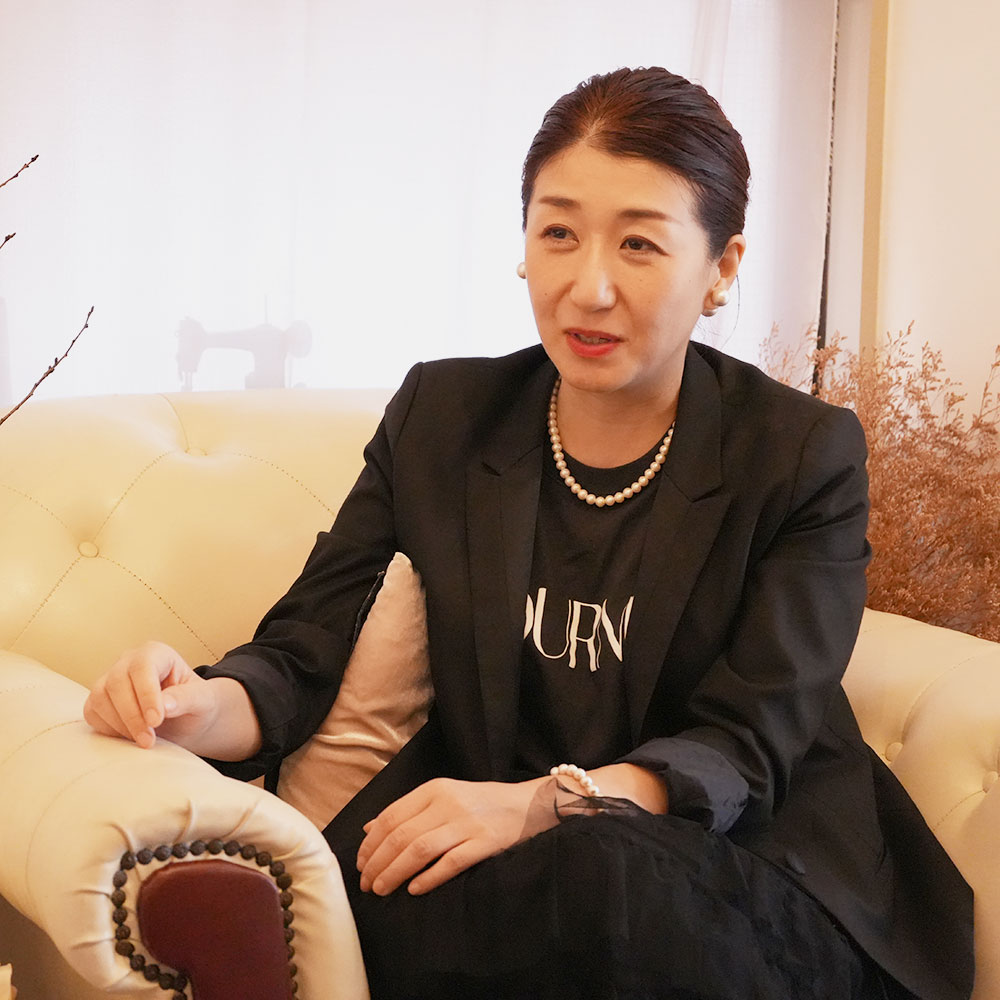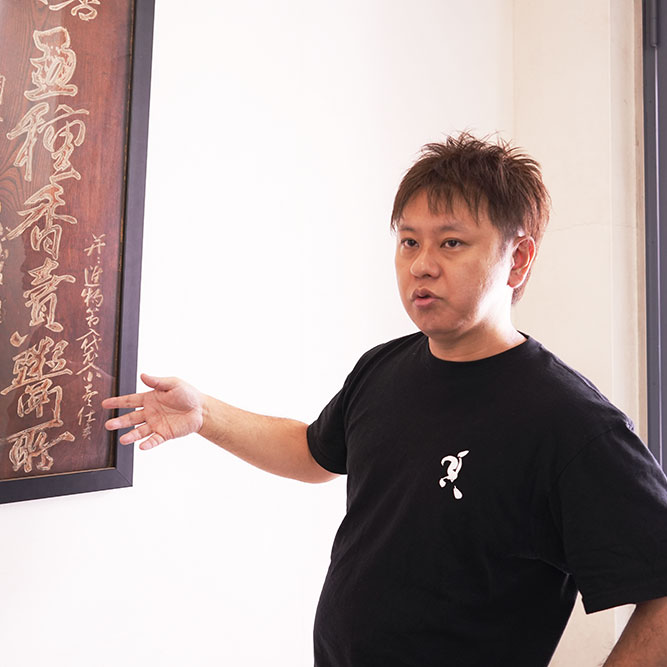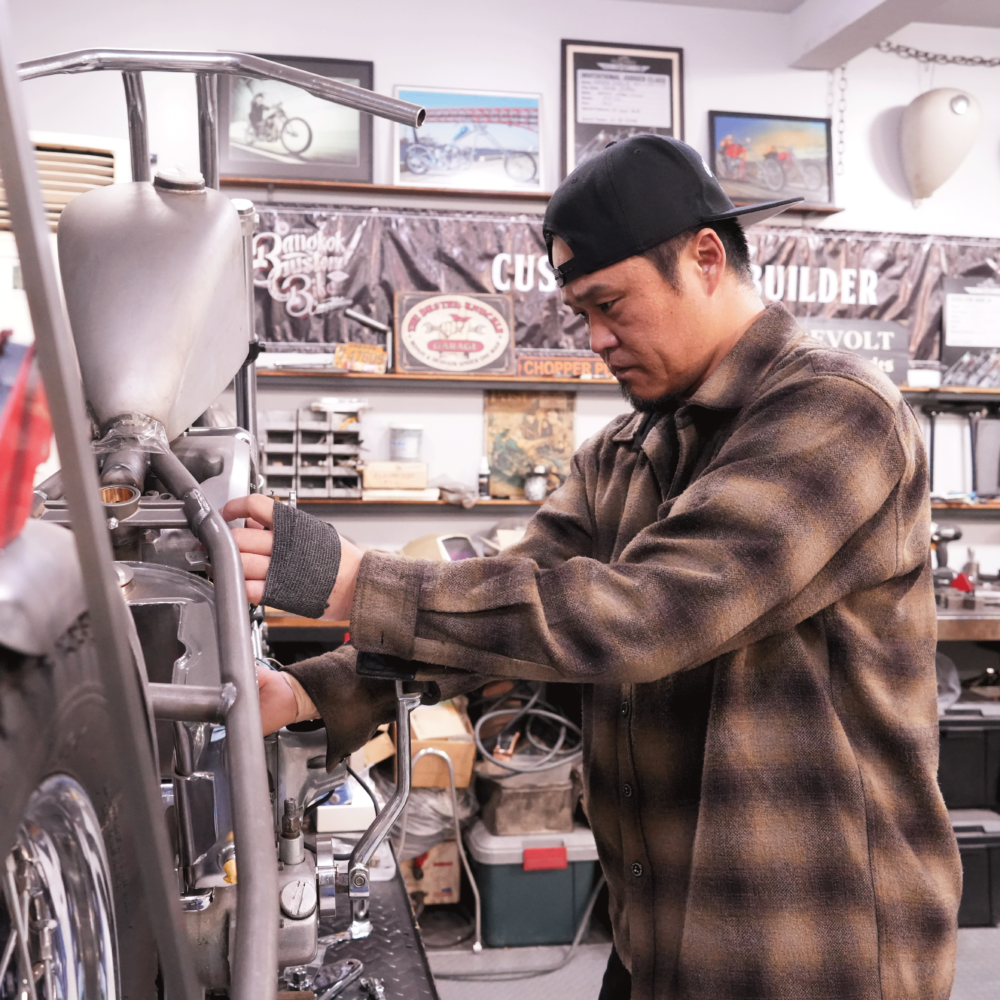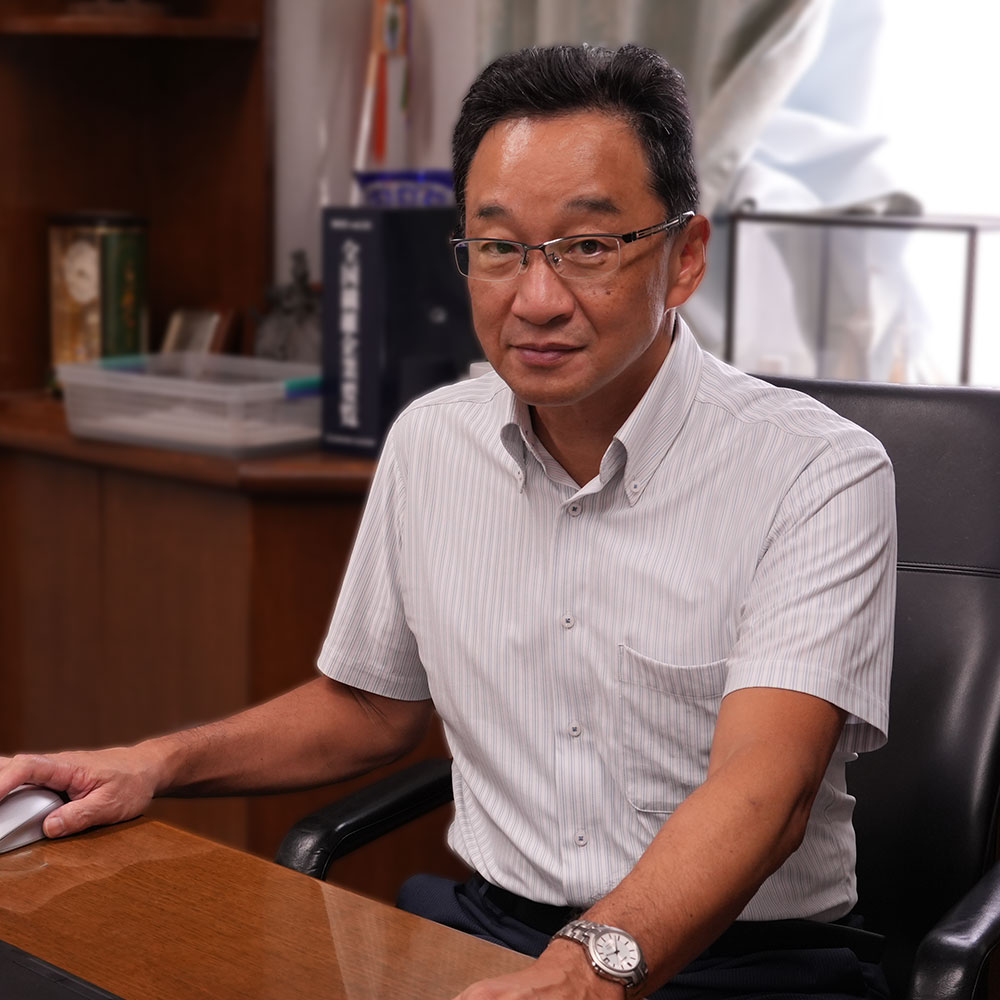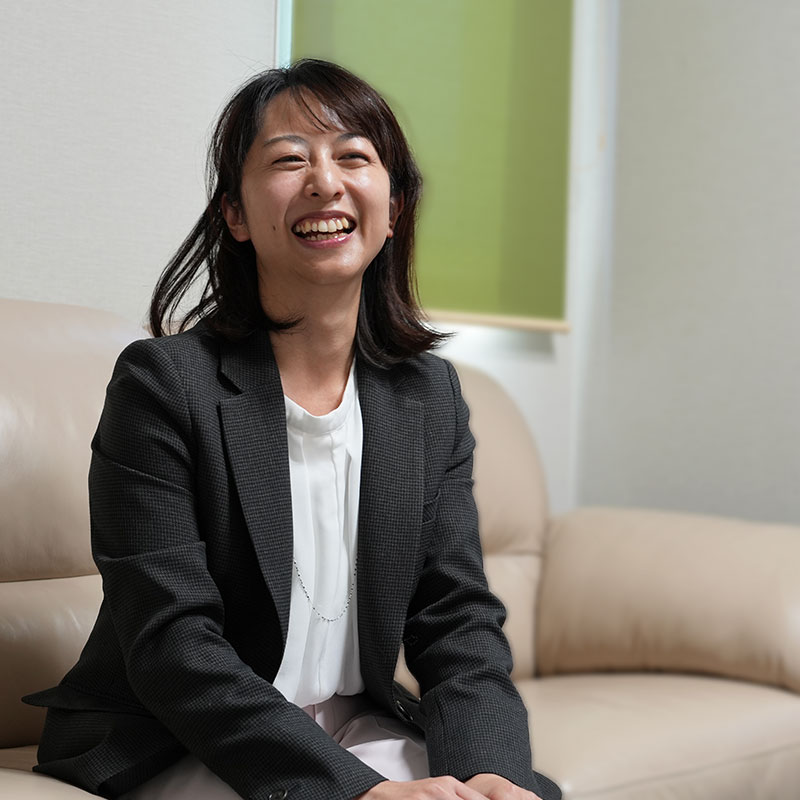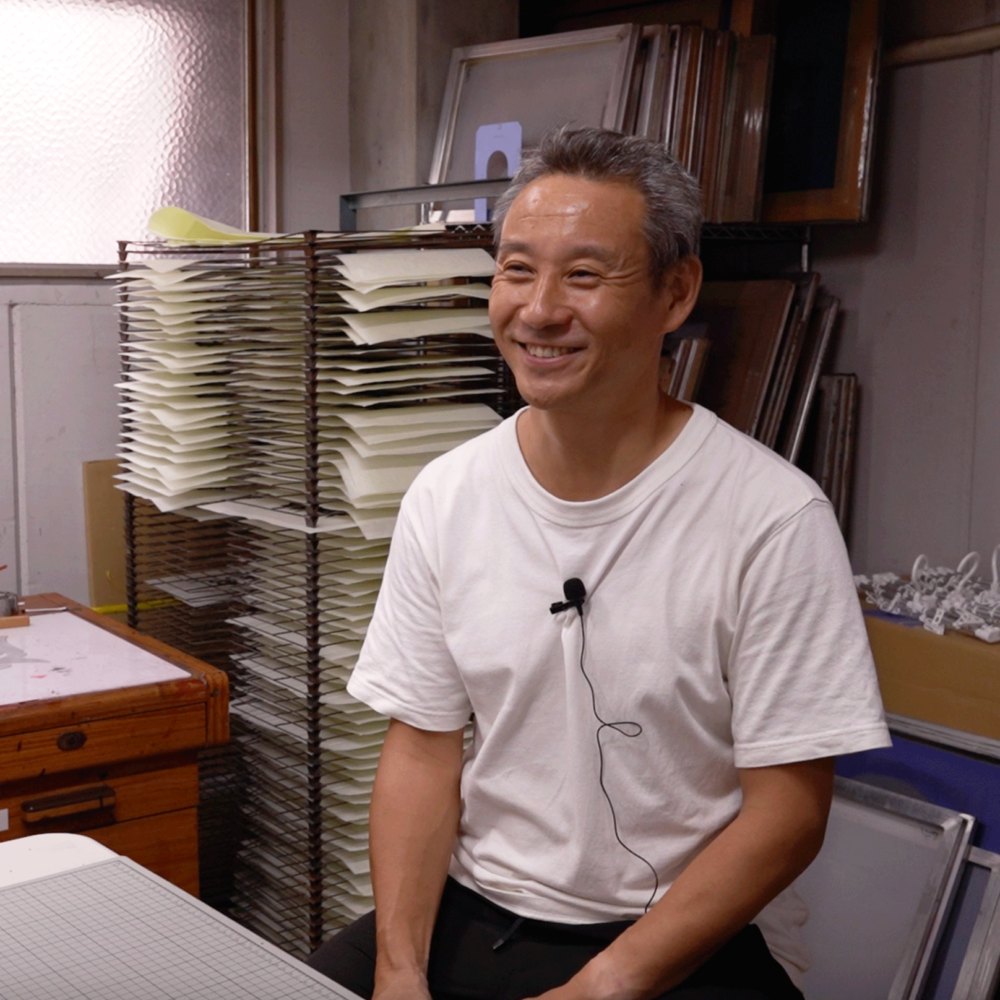Shaping the Future with Food Samples! Expanding Creativity and Challenges in New Forms
- Other manufacturing
- town planning
- Unique Products & Services
- Connecting with People
Osaka
Design Pocket Inc. (located in Sennichimae, Naniwa-ku, Osaka City) is engaged in the manufacturing and sale of food replicas and operates a store in "Sennichimae Doguyasuji Shopping Street," one of Japan's renowned kitchen streets, right next to "Namba Grand Kagetsu" in Osaka. The store is always crowded with both Japanese customers and overseas tourists. The secret of its appeal lies in the opportunity to experience creating food replicas.
The company began as a small design office in 2007 and expanded its business to include the manufacturing and sale of food replicas, significantly growing the company. We spoke with Ms. Sachiko Kurahashi, the passionate president who has been deeply committed to craftsmanship.
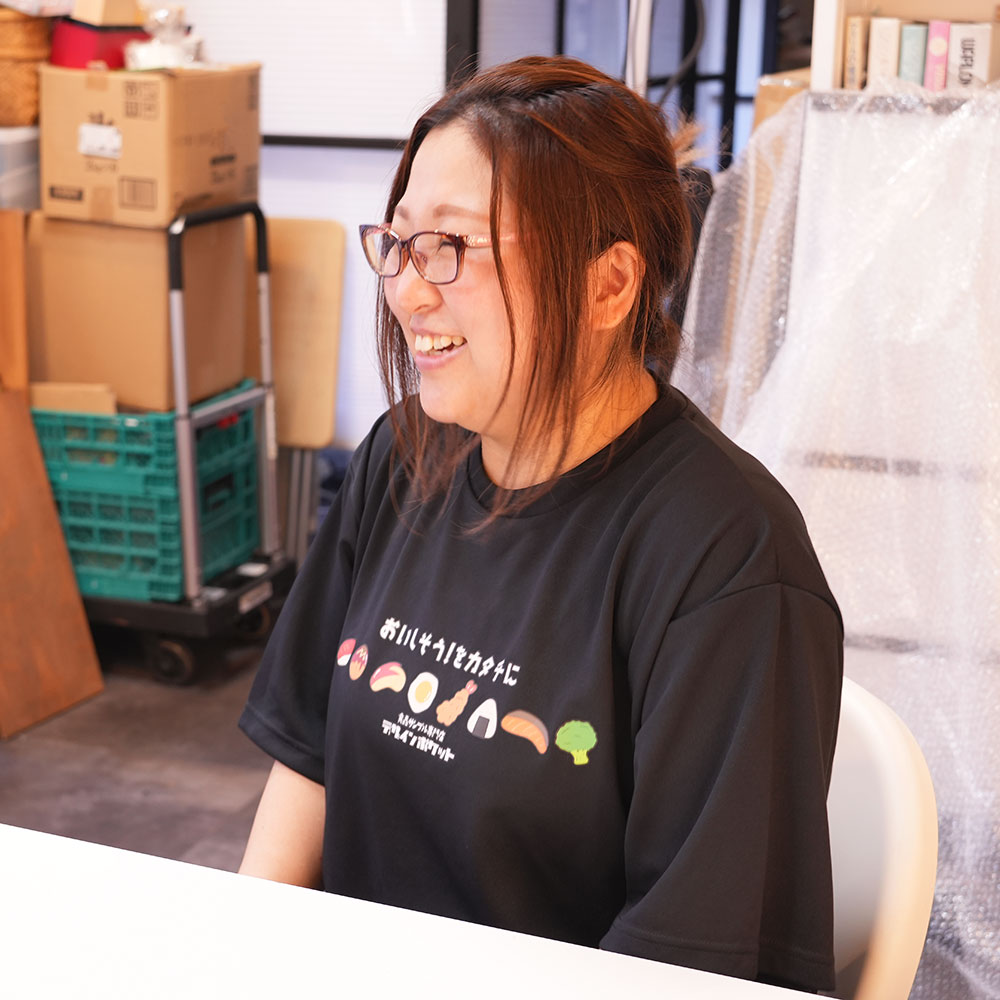
PROTAGONIST
Sachiko KurahashiRepresentative Director
Concept: “Japanese Festivals”
When you step into Doguyasuji Shopping Street from the Namba Grand Kagetsu side entrance, you’ll see “Design Pocket,” a shop specializing in food replicas, as the second store. The interior is decorated with lanterns and delicious-looking food replicas, creating a lively and fun Osaka-like atmosphere.
“Our shop is designed with the image of a Japanese festival in mind. The large sculpture at the entrance is a cartoon-style meat! You can even spin it around, making it perfect for commemorative photos,” says Ms. Kurahashi energetically.
The company was originally a design office and they were not involved in the production of food replicas. However, due to customer demand, they decided to incorporate it into their business. “As we were designing food replicas, we found ourselves falling in love with them and eventually began producing them. We also expanded our offerings beyond display food replicas to include keychains and magnets,” she explains.
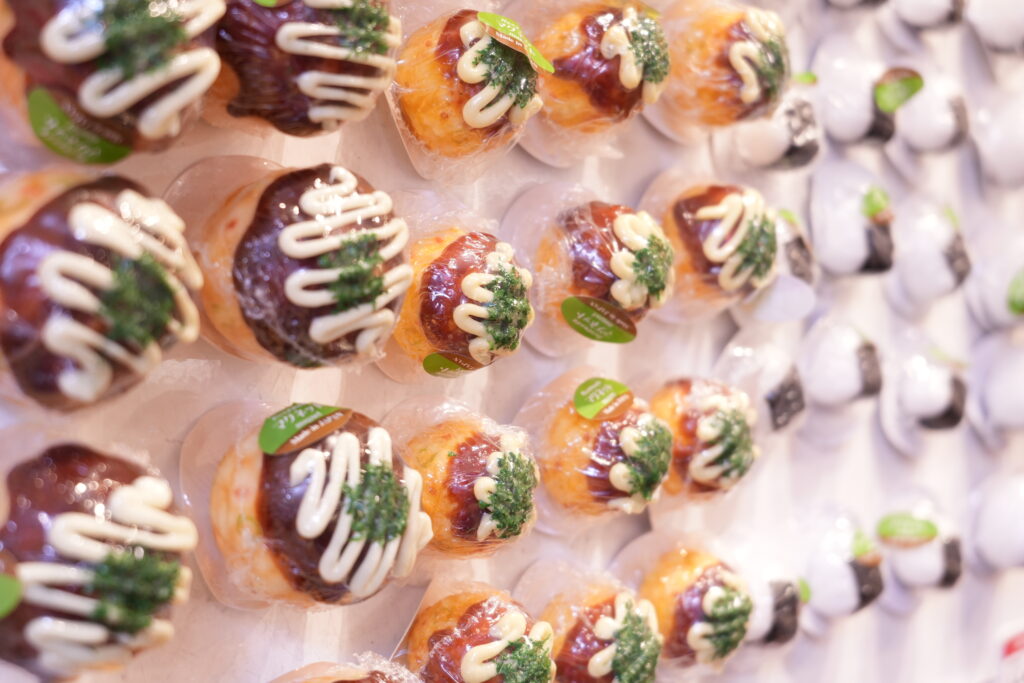
The company name, “Design Pocket,” is inspired by the lyrics of the song “Fushigi na Pocket” (The Mysterious Pocket), where the biscuits inside the pocket multiply each time you tap it. This name reflects Ms. Kurahashi’s desire to break free from preconceptions, create new “pockets,” and develop services and products through design.
Company Growth Through Passion and Initiative
As on-demand technology became widespread, small restaurants began opting for advertising as a means of attracting customers instead of the more costly food replicas. The food replica manufacturing industry faced increasing difficulties, and in a time when there were still few foreign tourists visiting Japan, the industry faced a crisis with the decline in demand for food replicas.
Wanting to do something for the small factories, Ms. Kurahashi wondered, “Is it possible to manufacture and sell food replicas to the general public?” She then came up with the idea of producing and selling mini-sized food replicas as straps and keychains for flip phones, which were common at the time.
“The ground floor of the building where our current store is located was originally a shop that made signs, and they were one of my clients. I asked the owner if I could host an event on Sundays, and they graciously agreed to let us use a small one-tatami-mat space for about three hours. That one event yielded a profit of about 50,000 to 60,000 yen. After continuing for about three to four months, thanks to the kindness of the building’s owner, we were offered the second floor twice a month. This allowed us to open our first store on the second floor of the same building. From then on, I was determined to offer a food replica crafting experience,” she recalls.
About a year later, the company had transformed into a food replica manufacturing and sales business.
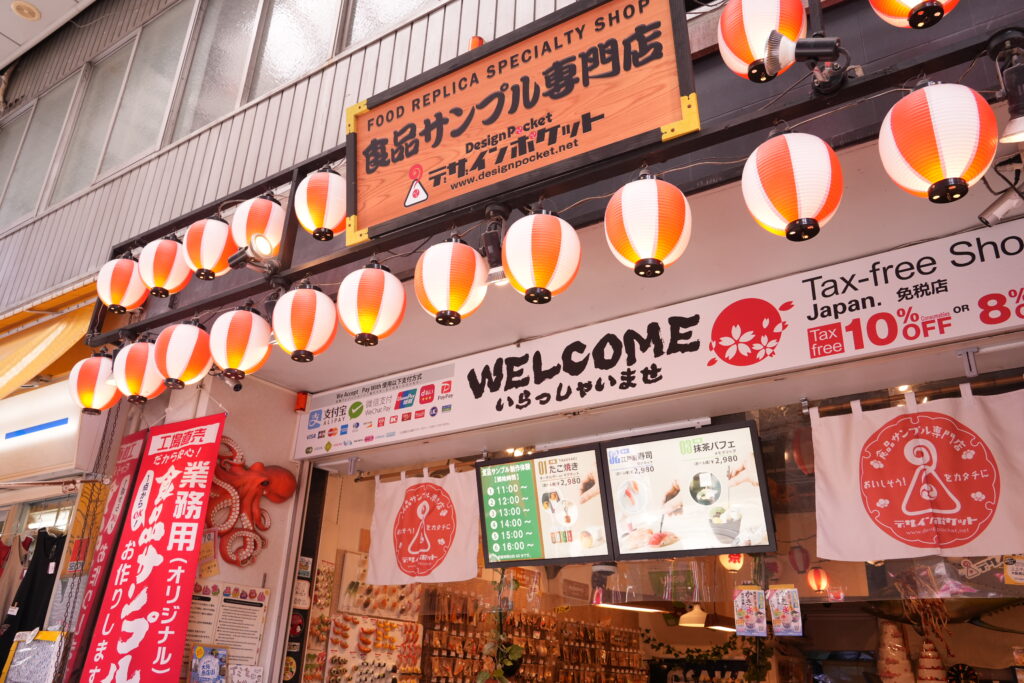
In 2013, they had the opportunity to move their store to the northern entrance of the shopping street. They were able to rent the first floor of a building right next to Namba Grand Kagetsu, which led to a three to fourfold increase in foot traffic. However, with only one factory in Osaka, they couldn’t keep up with the production demands, and there were days when they couldn’t stock the store. Ms. Kurahashi traveled around the country with her young children, seeking contracts with wholesale factories, but she faced many challenges: older managers often turned her away at the door, and some factories had restrictive contract terms. Despite these difficulties, she managed to secure contracts with a few factories that were not bound by such limitations. Reflecting on those times, she expressed deep gratitude for overcoming various obstacles to get to where she is today.
The store finally had products on display, and they achieved their long-cherished goal of hosting food replica crafting workshops.
Today, not only tourists but also local families and elderly participants are increasingly joining these workshops, with reservations booked up several months in advance. The company has since expanded its business to include opening an online shop and running a craftsman training school.
Preserving the Art of Food Replica Manufacturing for Future Generations
“When I first mentioned that I wanted to start a school, everyone was against it. Even my colleagues in Doguyasuji initially said it was absolutely impossible, but in the end, everyone came together to help. Some of them even come to teach as instructors now. We study the cost of goods, sales, and pricing of food replicas, research the quality differences between 100-yen store glasses and those from long-established stores, and apply these findings to design and manufacturing. We also learn about the latest trends from our colleagues in Doguyasuji,” says Ms. Kurahashi. However, the headwinds were quite strong.
When proceeding with the opening of the craftsman training school, a flood of complaints came in via phone calls and direct messages saying, “It is outrageous to simply teach what we have built up as food replica manufacturing technology.” Ms. Kurahashi believed that these factory owners were expressing their fear and anger over losing their share of the market. She decided to speak with each person who called with a complaint.
“I apologize if this is a bit of an imposition,but do you have a successor? Are you training any new technicians?” she would ask. In most cases, the answer was no. “Without successors, this technique will disappear. I want to preserve the design and manufacturing techniques of food replicas as a Japanese art,” she replied firmly. This resolute response led some to encourage her with, “Keep at it!” and the complaints gradually subsided.
Moreover, when “craftsmen” as specialists take on apprentices, they often fail to empathize when the apprentices struggle, leading to high dropout rates. On this point, Ms. Kurahashi comments, “I realized that there needed to be creativity in teaching methods. For beginners, there need to be steps, like climbing a staircase. This necessitated the creation of a curriculum. Since I am not a craftsman myself, I consulted closely with the artisans for their detailed input. Developing the curriculum was truly a challenging task,” she says.
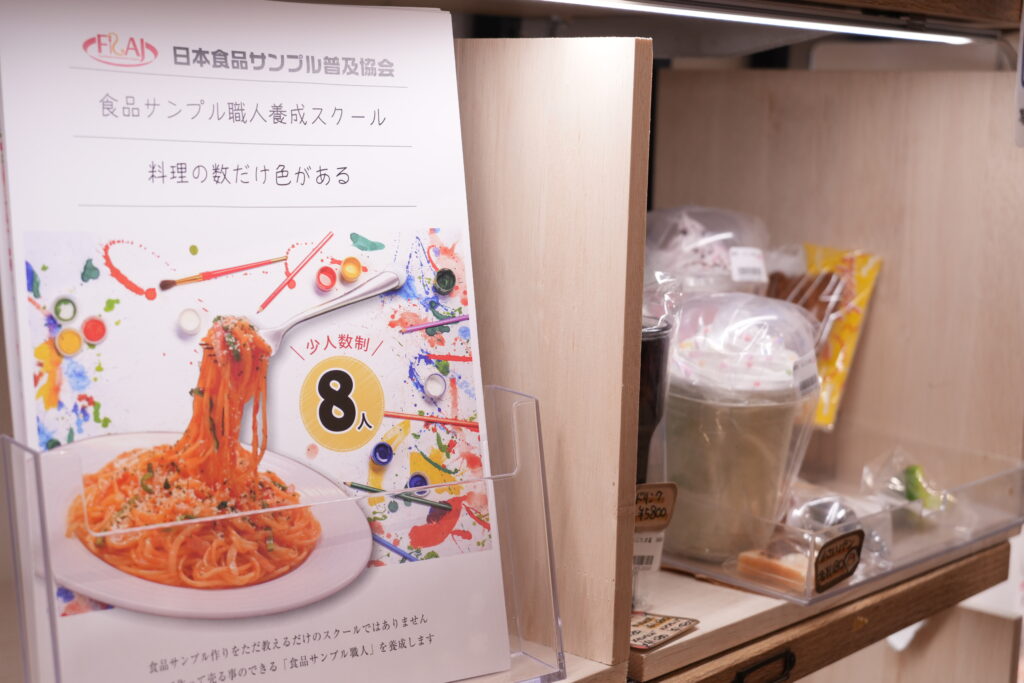
Currently, the craftsman training school curriculum consists of four categories: food replica lectures, color photography studies, food production, and business strategy. It takes about 25 days (four months) to complete. Students can choose from beginner, intermediate, and advanced courses, and to date, about 50 students have graduated. After graduation, some students have gained skills and joined companies, some have joined Design Pocket itself, and others have gone on to establish their own companies.
◾️Aiming to Give Back to Society in the Future
Ms. Kurahashi cites three key elements that contributed to the development of food replicas in Japan, each starting with the word “mo,” which can imply emphasis or inclusiveness in Japanese. The first is the “spirit of craftsmanship” that captures the most delicious-looking moments. The second is the “spirit of not wanting to waste,” which reflects a reluctance to discard food, even when used as decoration. The third is the “spirit of hospitality,” which conveys a message instantly. She expressed her desire to pass these values on to future generations and to continue pursuing limitless possibilities while always remembering the philosophy of “making deliciousness visible.”
Reflecting on her experience with food replica manufacturing, she shared how it taught her the importance of tools and the joy of the food and beverage industry, and how she realized the potential for growth through collaboration with her colleagues. Moving forward, she is determined to focus on community contributions to give back to society.
INFORMATION

Design Pocket Inc.
The company name "Design Pocket" is inspired by the children's song "Fushigi na Pocket."
In the song, biscuits in the pocket break apart and multiply when tapped...
They turn into tiny, tiny pieces that leave a sparkling impression in your hearts.
Through design, we aim to create services and products that reflect this spirit.
This sentiment is deeply embedded in our approach.
Moving forward, we will continue to view preconceived notions as our adversaries, create new "pockets," and persist in various transformations and challenges.
We aspire to provide many magical pockets to everyone.
- Founded in
- 2007/7/26
- No. of employees
- -
- Website
- https://www.designpocket.net/
- Writer:
- GOOD JOB STORY 編集部




